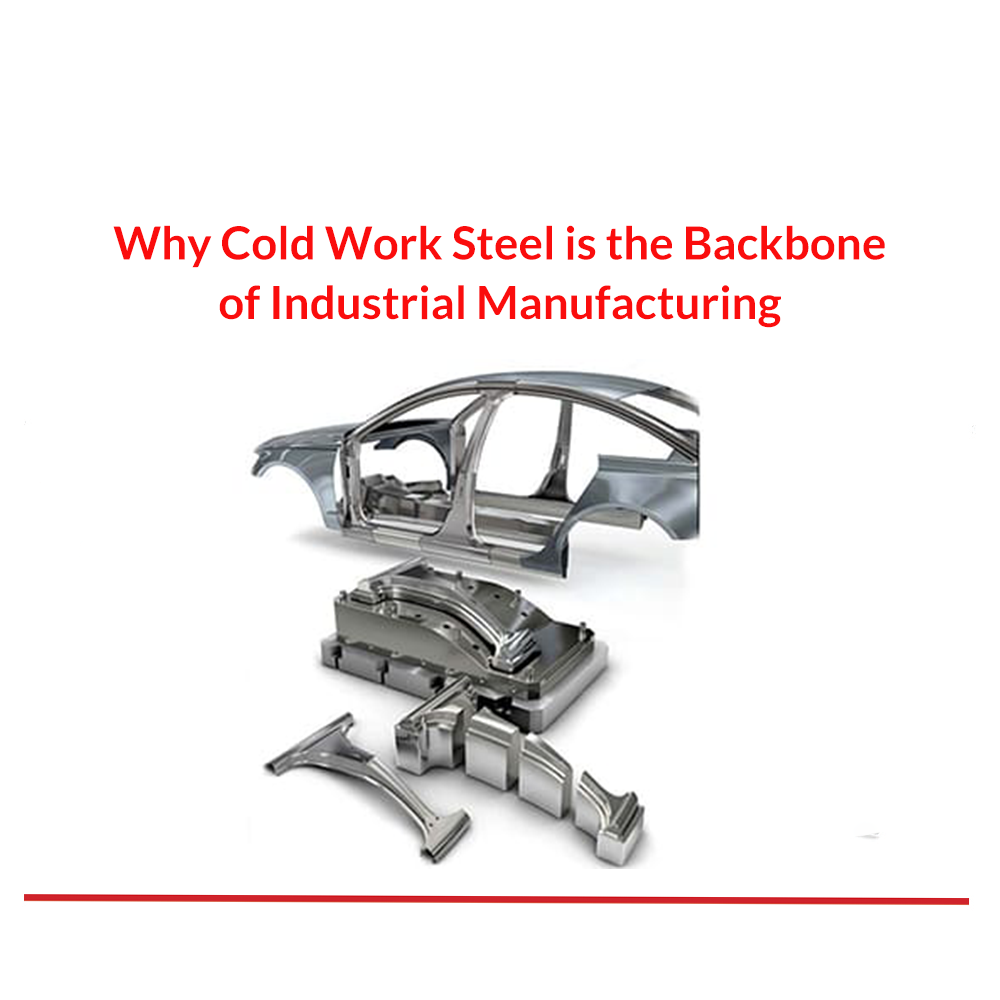In the world of industrial manufacturing, choosing the right material is crucial for ensuring performance, durability, and precision. Among the wide array of materials available, cold work steel stands out as a fundamental backbone for many industries. Whether in the production of tools, dies, or machinery, cold work steel’s unique properties make it indispensable. But what exactly makes cold work steel so essential, and why has it become the material of choice in industrial manufacturing? Let’s explore its benefits and wide-ranging applications.
1. What is Cold Work Steel?
Cold work steel is a specific category of tool steel designed for applications where the working temperature is below 200°C. This type of steel is characterized by its high hardness, wear resistance, and strength at room temperature, making it ideal for use in cold-forming applications such as stamping, shearing, and cutting.
Unlike hot work steel, which operates under extreme heat, cold work steel performs optimally under lower temperatures, providing exceptional stability and strength.
2. Key Properties That Make Cold Work Steel Essential
Cold work steel's widespread use in manufacturing stems from its exceptional physical and mechanical properties. These include:
a) High Hardness
Cold work steels are highly resistant to wear and tear due to their hardness. This characteristic makes them particularly useful for tools that require long-lasting durability, such as punches, dies, and molds.
b) Wear Resistance
In industrial applications, parts often experience significant friction and stress. Cold work steel is specially designed to withstand these conditions without degrading, which means it ensures the longevity of the tools and components used in production.
c) Toughness and Fatigue Strength
The toughness of cold work steel ensures that it can absorb high levels of mechanical stress without cracking. This property is essential for parts that endure repetitive motion or force, such as gears, bearings, and cutting tools.
d) Dimensional Stability
Cold work steel retains its shape and dimensions even under heavy loads. This dimensional stability is crucial in high-precision applications like dies, where even minor deviations can lead to defective products.
3. Applications of Cold Work Steel in Industrial Manufacturing
Cold work steel is employed across a variety of industrial sectors due to its versatility. Here are some of its most common applications:
a) Tool and Die Making
One of the primary uses of cold work steel is in tool and die making. Its ability to maintain high hardness and wear resistance under cold-forming processes makes it ideal for creating dies for punching, stamping, and shearing operations.
b) Blanking and Shearing Tools
Cold work steel is frequently used for manufacturing blanking and shearing tools, which require excellent sharpness and toughness to cut or shape metal sheets with precision.
c) Forming and Bending Dies
In metalworking, forming and bending dies made from cold work steel offer the strength and durability needed to shape metals without deformation, ensuring consistency in production.
d) Cutting Tools
Cutting tools like saw blades, knives, and drills rely on the hardness and toughness of cold work steel to maintain a sharp edge over long periods, even in demanding industrial environments.
4. Advantages of Cold Work Steel in Manufacturing
a) Cost Efficiency
Cold work steel’s durability reduces the frequency of tool replacement, leading to lower maintenance costs. For industries requiring high-volume production, this cost efficiency is a major advantage.
b) High Precision
Manufacturing processes require precision, and cold work steel’s dimensional stability ensures the consistent quality of parts and products. This precision minimizes errors and defects, contributing to more efficient production lines.
c) Longer Tool Life
Due to its high wear resistance and toughness, tools made from cold work steel last longer, reducing downtime and increasing productivity. This longevity is particularly beneficial in industries where tools endure heavy use.
d) Versatility
Cold work steel can be tailored to specific industrial applications through different heat treatments and alloying compositions, offering flexibility in manufacturing various parts and tools.
5. Challenges and Future of Cold Work Steel
While cold work steel offers numerous advantages, it is not without its challenges. The hardening process can make it brittle, requiring careful treatment to avoid cracking under extreme stress. However, ongoing advancements in metallurgy are addressing these issues, making cold work steel even more resilient and versatile.
As industries continue to demand higher efficiency and precision, cold work steel is evolving to meet these needs. Innovations in alloy composition and heat treatment techniques are making cold work steel even more adaptable, ensuring that it remains at the forefront of industrial manufacturing.
Conclusion
Cold work steel is undeniably the backbone of industrial manufacturing. Its unmatched strength, wear resistance, and ability to perform under cold-forming conditions make it essential for producing high-quality tools, dies, and machinery components. As industries push the boundaries of what is possible, cold work steel will continue to be a cornerstone material, driving innovation and ensuring reliable, long-lasting performance in manufacturing processes.
Whether it's in automotive production, aerospace, or heavy machinery, cold work steel plays a pivotal role in shaping the modern industrial landscape. Its enduring qualities make it an irreplaceable asset in achieving efficiency, precision, and durability.

